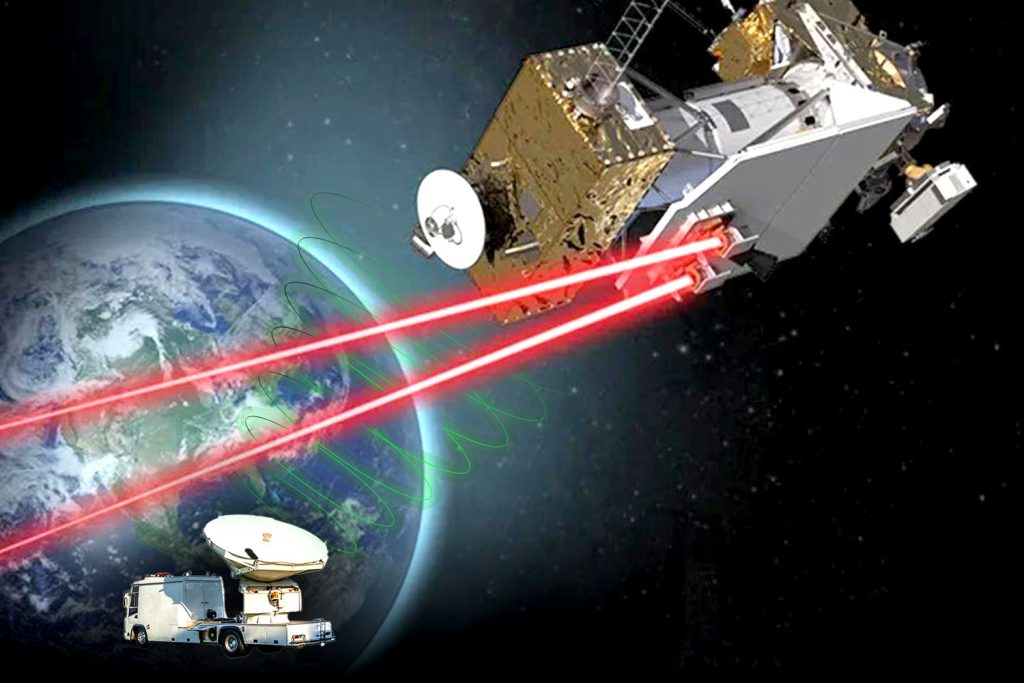China’s Chang Guang Satellite Technology (CGST) has achieved a significant milestone in satellite-to-ground laser communications, transmitting data at an unprecedented speed of 100 gigabits per second (Gbps). This breakthrough, achieved during a test involving a ground station mounted on a truck and one of the satellites in the Jilin-1 constellation, represents a tenfold increase over the company’s previous record. This achievement positions China at the forefront of this technology, potentially leapfrogging ahead of competitors like Elon Musk’s Starlink, which has yet to demonstrate similar satellite-to-ground laser communication capabilities. This advancement brings the realization of 6G technology and other applications reliant on high-speed satellite communication significantly closer.
The test involved the transmission of remote sensing images from a Jilin-1 satellite to an optical telescope on the mobile ground station. This high-speed transmission, equivalent to 10 gigabytes per second, drastically outperforms traditional radio-frequency links commonly used in satellite communication. While Starlink has showcased laser communication between its satellites, CGST’s successful demonstration of satellite-to-ground laser communication marks a significant advantage in the race to develop and deploy this cutting-edge technology. CGST plans to implement this technology across its entire Jilin-1 constellation, aiming to connect a network of 300 satellites by 2027.
The implications of this breakthrough extend beyond simply faster data transfer rates. The mobility of the ground station is a pivotal advantage of CGST’s system. Its ability to be easily relocated allows it to bypass obstacles such as cloud cover, adverse weather conditions, and atmospheric turbulence, ensuring consistent and reliable communication. This mobility contrasts with stationary ground stations like NASA’s TeraByte InfraRed Delivery (TBIRD) system, which, while achieving higher speeds in controlled environments, lacks the flexibility and adaptability of CGST’s mobile solution. This mobility could be crucial for rapid deployment in various scenarios, including disaster relief and remote area connectivity.
This technological advancement marks a significant step toward the development and implementation of 6G technology. While other institutions, such as the Massachusetts Institute of Technology (MIT) and NASA, have achieved comparable or even higher data transmission speeds with laser technology, the portability of CGST’s ground station sets it apart. The ability to readily deploy the ground station in optimal locations to mitigate atmospheric interference positions China to leverage this technology for practical applications sooner than competitors relying on fixed infrastructure.
While acknowledging the higher cost associated with upgrading ground stations for laser communication, CGST views this investment as a crucial stepping stone towards future advancements. The company believes that the enhanced performance and flexibility offered by laser communication systems outweigh the financial burden, making it a strategic priority in their pursuit of 6G technology. They anticipate that laser communication will become an indispensable component of future communication infrastructure, further solidifying the importance of their current investment and progress.
The successful test by CGST signifies not only a technological leap forward but also a strategic advantage for China in the global race towards 6G. The ability to transmit vast amounts of data quickly and reliably from space has significant implications for numerous fields, including remote sensing, navigation, and internet access. This development strengthens China’s position in the development of future communication infrastructure and underscores the growing importance of satellite-based technologies in the 21st century. CGST’s focus on a mobile and adaptable system provides a practical edge, paving the way for faster real-world applications and solidifying its position as a leader in this burgeoning field.




